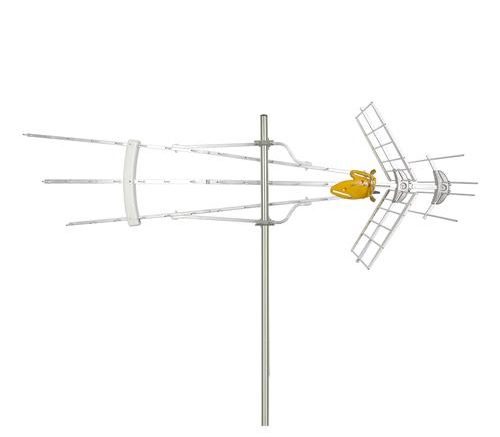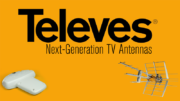The big dog is here. The time has come to stop looking at antenna designs from the 20th century and step up to a new antenna that gets great reception on both UHF and VHF-High, and combines the highest gain, the highest power, and advanced features that you need for today’s free TV viewing. I’m talking about the Televes DAT790 LR Mix antenna. This antenna combines the advanced design of Televes’ other long range antenna with a VHF dipole for UHF/VHF reception at 75 miles. The result is awesome performance no matter what channel you need to pick up. Before you buy this antenna, ask yourself these questions:
- Do I need to receive channels from up to 75 miles away?
- Do any of my local channels broadcast on VHF?
- Do I have a roof or attic space where I can mount an antenna?
- Can I install this antenna myself?
- Do I need an antenna that will stand up to the elements?
- Are all my channels coming from the same location?
- How important is price?
This review is available in PDF format! View it now!
The antenna itself
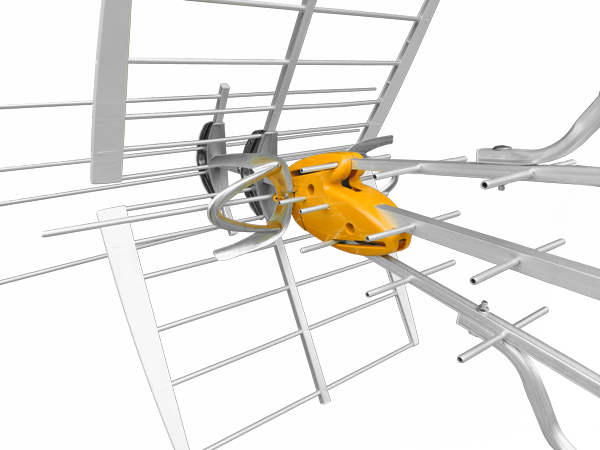
One characteristic of Televes’ entire DAT790 line is the triple set of “directors” in the front. These give the antenna its characteristic shape and help bring in more distant signals. The patented design used three sets of directors of unequal length to help focus ground-based signals and reject signals from cell towers. You can see them toward the right of the image, and also in the image below. You’ll also see the extra set of reflectors in back at left and the VHF dipole that sets this apart from its UHF-only cousin.
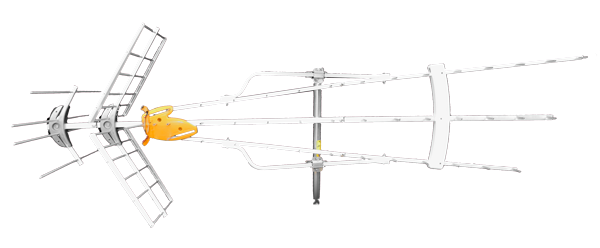
The difference between this antenna and other members of the Televes line is the extra-long front “directors.” This is one long antenna, no question about that. There’s actually about six inches of extra length on this antenna compared to the UHF-only version as well.
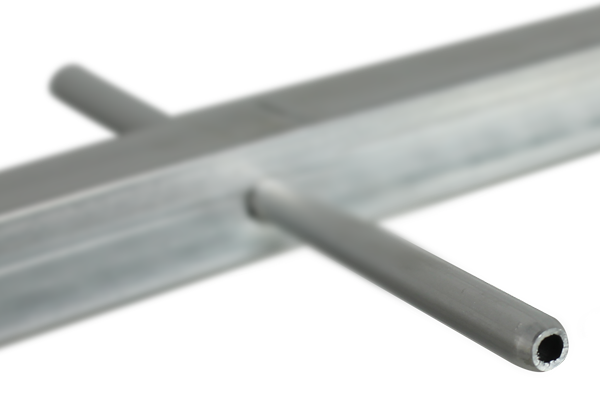
When you have an antenna this long, you need solid build quality. In this closeup you can see the heavy-duty laminated aluminum in use on this antenna. It’s a lot stronger than other similar antennas.
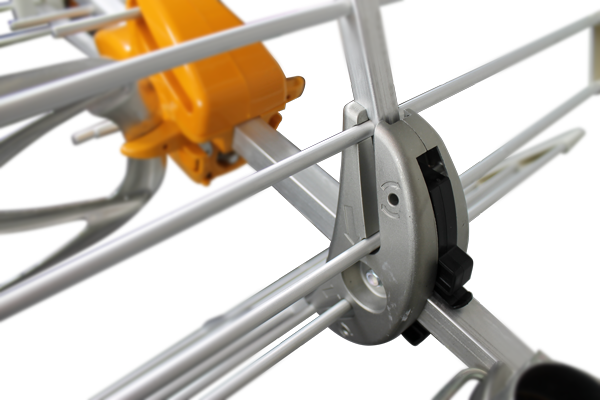
From this angle you can see the exceptional quality of the joints and connectors. The mating assembly where the reflectors meet the main body of the antenna looks like solid steel and holds up very well.
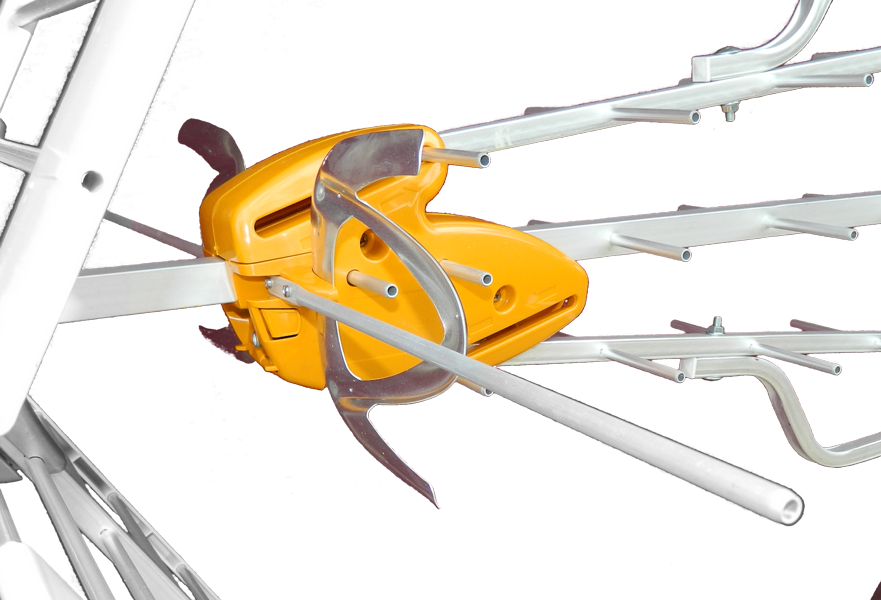
Here you can see the VHF dipole. This little bar in the center of the picture is the big difference between this antenna and the UHF-only version. It seems to be the same antenna cartridge used in the smaller DAT790 Mix antenna but combined with the extra-long directors at front, you get better VHF performance.
The optional amplifier

Amplified antennas are all the rage, because they let you drive multiple TVs and help you with fringe reception issues. This antenna comes with an innovative amplification system that is much better than others on the market for several reasons.
Passive amplification
Most mast-mounted amplifiers and amplified antennas put the amplifier outside near the antenna. This is done so that amplification takes place before any losses due to the cable between the antenna and the home. When you use an amplifier like that, you need to use RG6 cable with a solid copper core. This is the only cable that will actually carry power up the line so the amplifier can actually work. However, you can’t get that kind of cable at your local home store and you may not want to climb all around to install new cable.
That’s why the DAT790 is passively amplified, and it’s one of the few antennas on the market that is. Most amplified antennas won’t work at all if they’re not powered, but the DAT790 will. If you don’t need an amplifier, don’t use it.
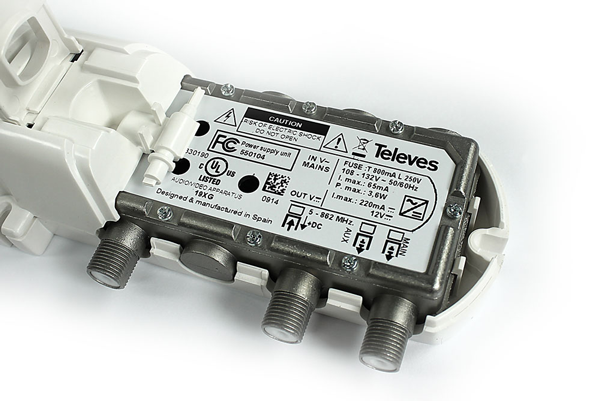
The DAT790 includes this power injector that sends power up to the amplifier and also lets you run up to 2 TVs without adding an additional signal. It plugs into the wall inside and safely does its job.
Installation

Mounting the DAT790 LR Mix is a little different from other antennas because of the size and weight of the thing. In other DAT790 antennas, the antenna mounts from a space behind the reflector. In this antenna, there are a pair of clamps that attach to the strengthening braces on the top and bottom. This allows the antenna to be mounted so it is balanced and this means it’s likely to stay in place better for years to come.
The mounting brackets are the same ones used in the rest of the line and allow the antenna to tilt up and down to make sure it’s on a level plane. With a very long-range antenna it’s necessary to get things as level as possible.
The brackets will accommodate any mast from 1.25 to 2.375 inches. With an antenna this heavy, a thicker mast is recommended. It may not fit on some smaller J-mounts due to the distance between the two clamps, which depending on their placement is about 15″.
Who is Televes?

They’re not a well-known company in the US… yet. Solid Signal chose to partner with Televes after an extensive worldwide search because Televes stands for the same things we stand for: quality, performance, and customer satisfaction. Televes is based in Spain and designs and manufacturers all their products in Europe. The manufacturing quality is far above other similar products.
The company has been around since 1958 and is a worldwide leader in antennas, satellite products and test equipment. They’re used by all the major satellite companies for their own test and measurement systems.
If you think Televes products look similar to Chinese-made products, there’s a reason for that; they’re the most popular antenna brand in Europe and therefore an easy target for reverse-engineering. The difference is obvious when you actually get your hands on an antenna, though. This is a solidly-built product designed to last for years.
Solid Signal is the exclusive direct retailer and distributor of Televes products in the US and we’ve worked hard to bring Televes antennas to our customers at a price that compares to much lower-quality antennas.
Why is LTE filtering important?

Televes antennas are the only brand to incorporate LTE filtering into their full antenna line. Every single antenna is designed to reject LTE signals from US carriers. This is incredibly important because as cell carriers build more towers, there’s an ever-growing chance that your home or office is going to be very near one, and that the LTE signal will be a lot stronger than distant antenna signals.
LTE provides wireless internet to cell phones using frequencies that were once used for TV antennas. Even though those frequencies aren’t used anymore, older antennas will still pick them up, and newer antennas can as well depending on their manufacture. LTE signals can even affect channels on “fractional” frequencies — For example LTE transmissions at 792MHz can also affect broadcasts at 396 and 198MHz, which are half and one-quarter of the frequency used by LTE. By blocking LTE transmissions completely you have the best chance of picking up all the channels you want, interference-free.
BOSS Amplification
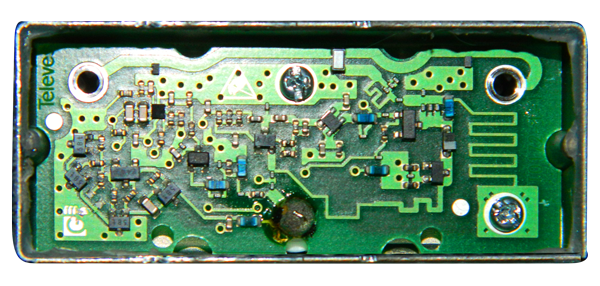
Every Televes amplified antenna uses BOSS amplification technology. Televes’ BOSS amplifiers actively prevent control the amount of gain for every frequency. This is a major upgrade in amplifier technology that only Televes has. Auto gain control allows every channel to be strongly amplified without worrying that other channels are going to be “overdriven” which would cause picture distortion or even damage to a TV tuner.
BOSS amplifiers are compact, low-noise amplifiers that use advanced technology to actively reject signals that fall out of the bands the antenna should receive. This is another way that the antenna is even more efficient. Power use is minimal and the amplifier runs cool enough to be housed in a weather-resistant enclosure and no airflow is necessary.
Finally, all Televes amplified antennas use passive technology meaning that if the amplifier is not powered, fails, or just isn’t plugged in the antenna will still work. Televes is one of very few manufacturers to include this technology.
Testing and Performance
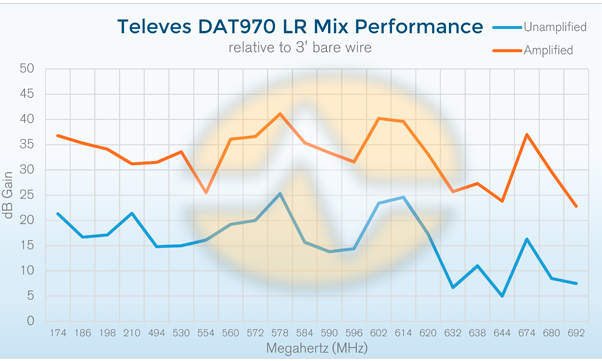
Surprisingly, results for this antenna differed somewhat from our testing of the DAT790 LR (the UHF-only version of this antenna.) Most results were within 3-4dB, which suggests that the testing conditions played a part. Even though we do try to test the antennas as similarly as possible, this is real-world testing and that means that things are going to change from day to day.
All tests were conducted at our laboratory approximately 55 miles from broadcast towers.
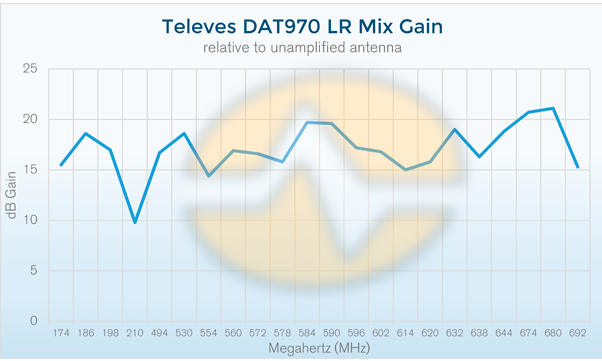
When you look at the gain of this antenna however, you do see strong amplification and strong gain across the entire VHF-High and UHF spectrum, generally above what you see from smaller antennas. The 55 mile distance we test all our antennas with probably was not far enough, and similarities with smaller antennas are probably due to auto gain correction cutting off the much higher peaks in reception when the amplifier was used.
It’s also very clear that this antenna uses slope compensation to make sure antenna gain is strong at high frequencies. Without it you would see a pronounced downward slope to the gain chart above and you actually see the opposite — gain is strongest at higher frequencies.
In this test we began measuring UHF gain on channel 52 which is currently used for LTE, not television. The antenna actually measured a 4dB loss compared to bare wire at this frequency, indicating that it was in fact actively filtering out the LTE frequency used in the US at 698MHz.
Should you buy this antenna?
This is the one antenna you should get if you’re looking for the best. There’s simply no other alternative. While it does not pull in VHF-low signals, that shouldn’t be a problem for most customers. It’s very well-built and should stand up to years of use. However, there are two factors which you should consider when deciding which antenna to purchase. All long-range antennas are intentionally built with a narrower “beam width” meaning that you’ll need to aim more carefully and if stations are far apart from each other it may not be possible to get full power from all stations. Also, this antenna is a bit more expensive than the base DAT790 model so if you do not need 75 mile performance you can save a little money by choosing the less expensive option.
On the other hand, there’s no substitute if you want a super-powered antenna that you can expect to stay on your roof for decades. If you’re ready to put up the last antenna you’ll ever need, choose the Televes DAT790 LR Mix, now available from Solid Signal.

